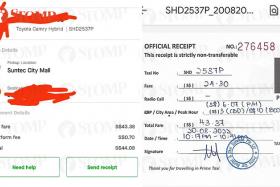4.8% drop in average price for formula milk: Government task force
More parents buying newly introduced cheaper brands and more mums are also breastfeeding
Parents of young children will be happy to know that the average price of formula milk has dropped by 4.8 per cent over a few months, with milk for babies below six months seeing the largest average price decrease.
This follows efforts by a Government task force set up last May to tackle the escalating cost of infant formula milk here.
According to retail data from Nielsen, between last May and November, the average cost of formula milk for babies below six months fell by 13 per cent, while that for babies aged between six and 12 months dropped by 9 per cent.
The average price of formula milk for babies aged one to three years is 5.4 per cent lower.
Sharing these numbers yesterday, Senior Minister of State for Trade and Industry Koh Poh Koon, who chairs the Government task force, said prices have gone down due to the introduction of more options for consumers.
Since the task force's inception, six new brands with 25 product lines have been made available.
When the task force was set up, some brands were double the price from a decade earlier.
There are now five brand options costing less than $35 for infants aged below 12 months, up from two last May.
It is welcome news for private tutor Chelsia Chan, 31, who had health issues with breastfeeding her year-old daughter.
Her daughter, who was born in December 2016, drinks Australia's Own, which is one of the formula milk brands that started selling here recently.
USED TO BE 'OVERPRICED'
"The introduction of these other brands have made the price of milk cheaper, which is good because when my daughter was just born, it was really overpriced," she told The New Paper.
Total sales of formula milk also fell by around 17 per cent between May and November last year.
In particular, the amount of formula milk sold for infants aged up to 12 months fell by 12.4 per cent, while that for children aged one to three years and three to six years fell by 12.6 per cent and 20.8 per cent respectively.
"What this suggests is that now, hopefully, more mothers are breastfeeding," said Dr Koh, who pointed out that this is best for infants.
According to surveys by the Health Promotion Board, there was a 19-percentage-point jump in the proportion of mothers who planned to change from formula to whole cow's milk when their child turned one, between July and Sept last year.
There was also a 22 percentage-point increase in the share of mothers aware of the appropriate age to introduce solids to their child.
Dr Koh added that food regulations will be amended to disallow certain nutrition and health claims by formula milk manufacturers, as well as design elements that idealise the use of infant formula.
In a media release yesterday, NTUC FairPrice said that with two new infant milk formula brands that it rolled out exclusively last year, more than half its customers have switched "from higher-end brands to more affordable alternatives".
"Overall, FairPrice has seen the weighted average price per pack of formula milk decline by 2.6 per cent to $47.12 from $48.37, since these two formula milk brands were introduced last year," it said in the release.
Get The New Paper on your phone with the free TNP app. Download from the Apple App Store or Google Play Store now



